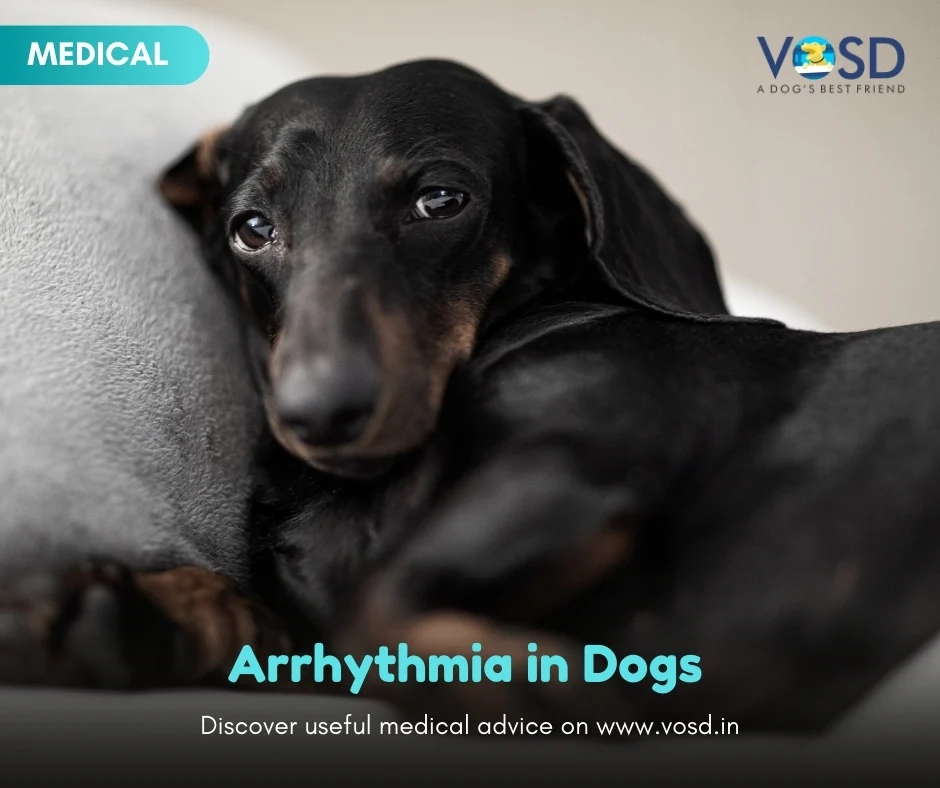To understand arrhythmia in dogs, let us first understand what arrhythmia is. Read on to find out all you need to know.
Simply put, it is an irregular heartbeat. It indicates an abnormality in the speed, strength, and regularity of the heartbeat. Usually the heart works in a coordinated manner as it pumps blood to the lungs and body. This is because of the electrical conduction system that controls the heart rate.
The electrical impulses generated by the electrical conduction system stimulate the heart’s muscles to pump blood through the interior arteries and out to the rest of the body, even as it contracts. Arrhythmia is when this electrical activity is not as it should be. It is quite common in dogs and there are many causes such as infections, stress, congenital defects etc. However, while it may be common it is also important to look for related health issues in your dog if you notice arrhythmia.
Ventricular Arrhythmias
This is very common among Boxers and Bulldogs. It is also known as Boxer Cardiomyopathy and is most often from the right ventricle (arrhythmogenic right ventricular cardiomyopathy or ARVC). If the ventricular arrhythmia occurs at a rapid pace, it is called ventricular tachycardia and this causes a decrease of blood flowing to the body and the dog is likely to collapse. If it reaches the stage of ventricular fibrillation, it can be fatal.
In the case of a breed such as German Shepherd, ventricular arrhythmia may be inherited and very young dogs below the age of 2 are affected.
Atrial Fibrillation
Atrial fibrillation causes the heart to beat too fast. It could also be caused by an enlarged heart or poor functioning of the heart. It is possible to get the heartbeat to slow down and return to normal with cardioversion or with medication.
Sinus arrhythmia
Sinus arrhythmia or sick sinus arrhythmia is when the sinus node does not work properly. It does not send the impulse to trigger the heart to contract as required and instead causes the heart to stop beating completely. Eight seconds is the maximum time when it can stop and still come back to normal. However, if more time than that elapses, the dog will collapse. Another part of the heart may be able to pick up the rhythm and initiate the trigger to rescue the dog from going into a complete cardiac arrest. Usually, the sinus node will restart on its own; but, the rhythm will not be normal and will have too many pauses between each beat. In some dogs, the sinus node causes sinus bradycardia; other dogs will have periods of excessive tachycardia as in too rapid a heartbeat. In such a scenario, your dog may require a pacemaker to regulate the heartbeat.
What causes arrhythmia in dogs?
There can be any number of reasons why your dog has arrhythmia. Some of them are: congenital defects, chronic valve disease, stress, trauma, injury, heart medication, respiratory issues, congestive heart failure, infections, cerebral disorders or a few conditions that cause undue pressure in the skull, electrolyte imbalance etc.
What are the symptoms of arrhythmia?
Very clear symptoms of arrhythmia would be the irregularity of the heartbeat. It could be too slow, too fast or will skip a few beats off and on. However, there may be a few outward symptoms such as weakness, fainting, difficulty in breathing, frequent coughing and an intolerance of any form of exercise and these are easily mistaken as a result of something other than arrhythmia.
Diagnosis
If you observe the symptoms that could be associated with arrhythmia or if your dog’s vet has noticed these signs during a regular checkup, a thorough physical exam may be called for. This would include the entire medical history of your dog, and a clear recording of the onset of symptoms. A clear diagnosis is only possible if the information is complete. Armed with this, your dog’s vet may be able to glean if there are any underlying disorders causing arrhythmia that need to be examined.
To study and understand the functioning of the heart muscle, your vet may ask for an electrocardiogram (ECG, or EKG) recording. This will highlight any abnormalities in the electrical conduction system in the heart. To know if your dog is predisposed towards airway problems, an x-ray of the head and neck may be required. If needed, a pharyngoscopy or laryngoscopy may be additionally required
Treatment
Treatment of arrhythmia largely depends on the severity of the condition and its causes. If the arrhythmia is not in any way a danger to the health of your dog, treatment may not even be necessary. However, in case arrhythmia poses a threat to the life of your dog, or if it is indicative of existing heart disease, your vet may need to take stronger measures.
A physical exam would be a start when your vet can study the heartbeat. Your dog’s vet may also need to run a few tests and x-rays to identify the cause and need for specific treatment.
Medications such as digoxin and atropine are commonly prescribed.
Treatment for ventricular arrhythmia
Dogs with ventricular arrhythmia are treated with antiarrhythmics. In order to make an accurate treatment plan, Holter monitoring may be necessary. Holter monitoring is best described as a 24-hour monitoring system ECG recording and monitoring happens through the day and night even as your dog goes about the usual activities. You will maintain a record of this monitoring. The Holter monitoring is also used to see if and how well your dog responds to a specific treatment.
Treatment for atrial fibrillation
In the case of atrial fibrillation, treatment plan would include medication. The Holter monitoring would help to see if the medication and its dosage are sufficient to slow down the heartbeat. This can then be followed up with an ECG.
Treatment for sinus arrhythmia:
If your dog is afflicted by the sinus node syndrome, or sinus arrhythmia, your dog’s vet may decide to implant a pacemaker. The response to such a procedure is found to be favorable.
In dogs that also have the tachycardia medication(s) is prescribed if it does not subside after implantation of a pacemaker.
What can you do as a pet parent?
Be aware and be watchful. Take your dog to the vet for regular checkups to make sure that you catch signs of arrhythmia immediately. Listen to your dog’s vet and follow the instructions, including restrictions on physical activity if necessary. Above all, maintain the dog’s health history meticulously.
Disclaimer:
The information contained in VOSD Vet Advice™ is not intended nor implied to be a substitute for professional medical action which is provided by your vet. You assume full responsibility for how you choose to use this information. For any emergency situation related to a dog’s health, please visit the nearest veterinary clinic.








